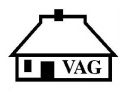Dendrochronology Database
Vernacular Architecture Group (VAG), 2000. (updated 2024) https://doi.org/10.5284/1116910. How to cite using this DOI
Data copyright © Vernacular Architecture Group (VAG) unless otherwise stated
This work is licensed under the ADS Terms of Use and Access.
Primary contact
Vernacular Architecture Group (VAG)
84 Derby Road
Spondon
Derbyshire
DE21 7LX
Resource identifiers
- ADS Collection: 282
- DOI:https://doi.org/10.5284/1116910
- How to cite using this DOI
Full Record - Stokesay, Stokesay Castle, South Tower
| Location | Stokesay, Stokesay Castle, South Tower, Shropshire |
|---|---|
| Grid reference | SO 436 817 |
| Description | Stokesay Castle on the Welsh Border is one of England's finest examples of a medieval fortified manor house. The earliest phase identified dates from 1262/3 and includes the lower part of South Passage Block, as well as a re-set door and frame in the Solar Undercroft. It had been suggested that the lower storey of the North Tower was earlier, but none of the timber comprising the North Tower Undercroft ceiling was suitable for dating. However, floor boards immediately above this ceiling were found to be coeval with the upper floors of the North Tower, Solar Undercroft and roof, and the Great Hall roof, with latest felling dates of 1290. Two ex situ shutters were discovered (one clearly from the Hall windows) giving termini post quems suggesting they are primary. The Hall roof is a remarkable construction consisting of a hybrid mixture of raised crucks, aisled end trusses, and an unusual example of collar-purlin without crown posts. The floors in the North Tower and Solar are supported on substantial beams on massive brackets. The original roof of individual rafter couples with soulaces and ashlars, hipped with gablets at each end, survives over the Solar, but has been replaced in outline on the North Tower. The archaeological evidence, as postulated by RA. Cordingley, supports the Hall, Solar and North Tower as being of one phase, and this has been confirmed by the dendrochronology. Subsequent alterations identified in the North Tower included a northward extension to the jettied top storey shortly after 1578, and the Solar Undercroft floor being replaced in or shortly after 1662/3. The Gatehouse is an elaborately carved and jettied structure, and was found to date from 1640/41, just as the Civil War was beginning. A door jamb in the attic dated to 1652, indicating an alteration to the staircase to the top floor. Fragments of panelling originating from the Gatehouse as well as the Solar were found to have been felled after 1639 and may be part of the 1640's phase. No original timberwork survives in the South Tower, but a replacement first floor ceiling with moulded beams was found to date from 1640/41, obviously part of the same building campaign as the Gatehouse. Fragments of the external door to the South Tower proved the timber to have been felled after 1541. Photographs taken by John Bailey of the Ancient Monuments Laboratory of the faces of doors and underside of floorboards from the Solar and North Tower Undercrofts have enabled the dating of these features which would have otherwise been impossible to sample non-destructively. The dating was arranged by Tony Fleming and Dr Glyn Coppack of Historic Properties Midlands. |
| Type of Building | fortified manor house |
| DATES | |
| Type of date | Tree-ring (ring width) date. |
| Felling Date Range | 1640 - 1641 |
| Period | Post Medieval |
| Century | 17 |
| Date | 1640/1 |
| Notes | Date for inserted first floor |
| IDENTIFIERS | |
| VA Volume No. | 28 |
| VA Page No. | 160 |
| List sequence id | 923 |
| Laboratory | Oxford Dendrochronology Laboratory (and predecessors) |
Cite record using this URL: http://archaeologydataservice.ac.uk/archives/view/vag_dendro/full_record.cfm?id=923
Other dates from a similar location...
View Stokesay, Stokesay Castle, Phase 1, Solar Undercroft and South Passage, Shropshire
View Stokesay, Stokesay Castle, Phase 2, Great Hall (1283-9);North Tower; Solar Undercroft Roof, Shropshire
View Stokesay, Stokesay Castle, Gatehouse, Shropshire





